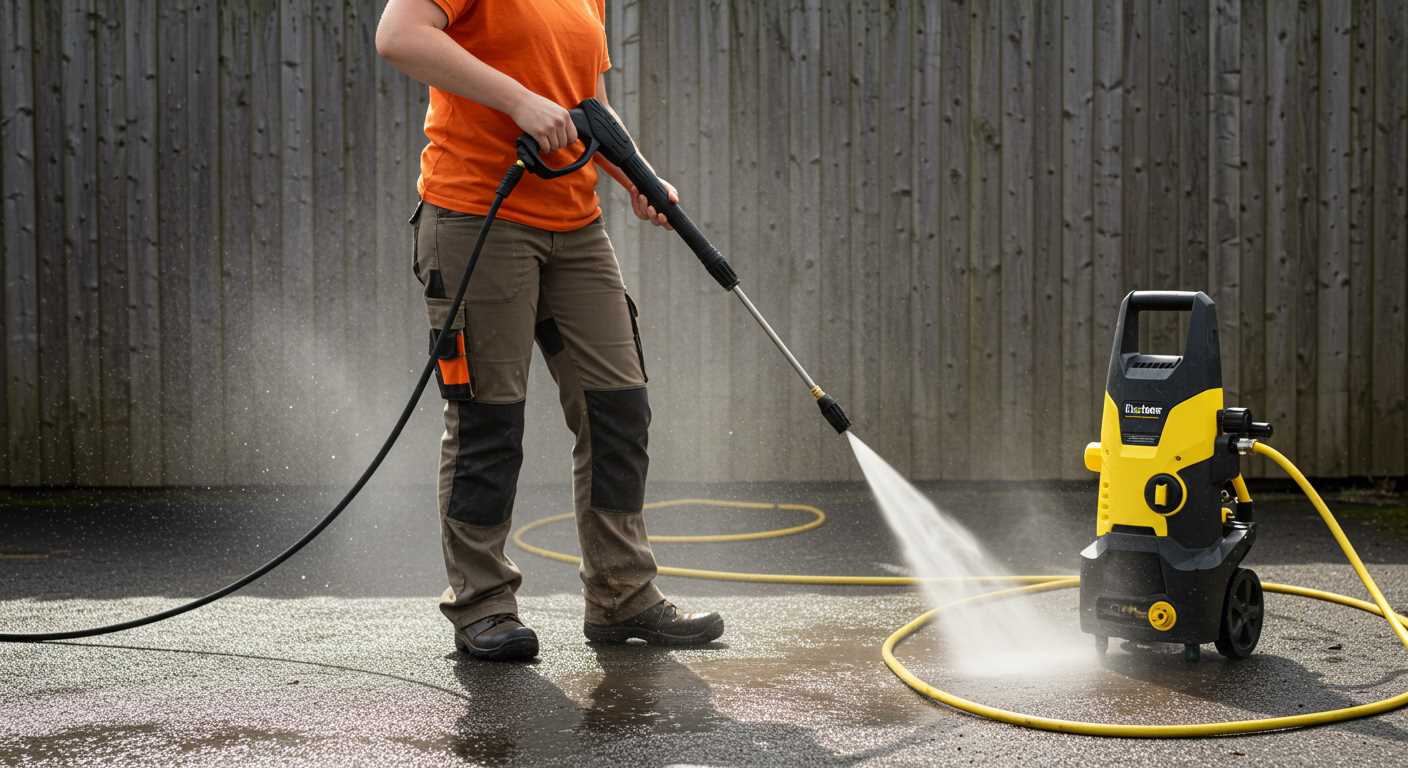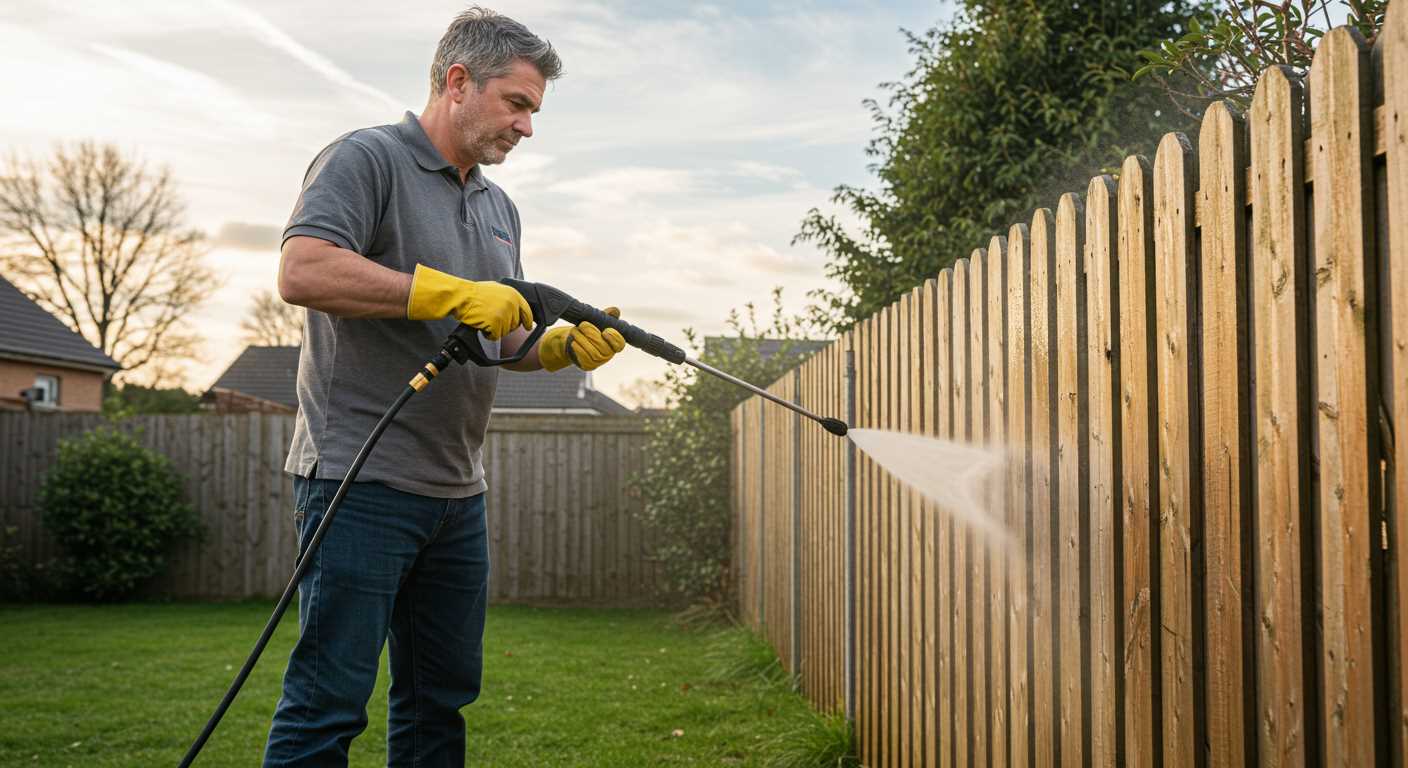



One of the most straightforward methods to enhance flow is to check the inlet filter. If it’s clogged with debris, it will restrict the flow into the unit, leading to decreased performance. Cleaning or replacing this filter can dramatically improve efficiency and output.
Another effective strategy involves using a greater diameter hose. Standard hoses can limit volume; opting for wider options allows more liquid to reach the machine. Ensure that any connectors or couplings also match this specification to avoid bottlenecks in fluid movement.
Consider adjusting the water source itself. If you’re drawing from a tap, ensure it’s fully open. Installing a pressure-boosting pump can also greatly enhance the force available before it even reaches your equipment, leading to noticeable improvements whilst operating.
Regular maintenance checks are imperative as well. Inspecting hoses for kinks, leaks, or other obstructions will ensure that your system remains unobstructed, maintaining optimal conditions for maximum output.
Finally, evaluate the settings on your cleaning device. Different attachments and nozzles can affect how fluid is delivered. Sometimes, simply switching to a different nozzle can yield better results and improve overall performance during use.
Maximising Flow for Optimal Cleaning
Replace any worn or clogged hoses and fittings. Rubber hoses may age, leading to reduced flow. Consider a larger diameter hose, which can support greater volume, enhancing performance. Always ensure connections are airtight to prevent leaks.
Adjusting the Inlet Source
Check the tap you’re utilising. Ensure it provides sufficient flow, with a minimum of 7-10 litres per minute as a benchmark. If necessary, use a dedicated supply line free from obstructions or low spots. If the system permits, raise the inlet source a few feet to potentially generate more force.
Using a Pressure Booster
Investing in a booster pump can significantly elevate performance. These units raise the incoming flow, effectively heightening the experience. Ensure compatibility with your existing model, as not all devices are designed to blend seamlessly with add-ons.
Checking Your Water Supply System

Inspect the main supply line for leaks. Even small cracks can significantly impact flow. Use a simple pressure gauge to measure the flow rate from your tap; it should be at least 8 litres per minute. If it’s lower, investigate potential blockages in pipes or fittings.
Assessing Filters and Hoses
Check the filter screens on your taps and hoses. Clogged screens restrict flow, so clean or replace them as necessary. Ensure hoses are kink-free and at least 3/4 inch in diameter; narrower hoses can impede performance.
Valves and Connections
Examine all valves and connections for tightness. Loose fittings can cause leaks, reducing efficiency. If you’re using extension hoses, confirm they’re compatible and in good condition to avoid any unwanted restrictions.
Inspecting Hose Condition and Length
.jpg)
Examine the hose carefully for any signs of wear, kinks, or leaks. Damaged hoses can significantly impede flow. Look for:
- Cracks or abrasions along the length.
- Soft spots indicating internal damage.
- Connectors that are not sealing properly, causing leaks.
Ensure all connections are snug, as loose fittings can lead to water loss and reduced efficiency. If you spot any issues, replacing the hose is a must. I recommend using reinforced hoses that can handle higher pressures and are less prone to damage.
Consider the length of your hose as well. A longer length can diminish performance. If your current hose stretches beyond 30 meters, the output can suffer. Choose a length that meets your needs without excessive slack.
For optimal results, invest in a high-quality hose rated for the intended use. This not only enhances performance but prolongs the lifespan of your equipment.
Finally, always store your hose properly. Avoid sharp bends and keep it away from extreme temperatures to maintain its integrity over time.
Choosing the Right Nozzle for the Job
Selecting the correct nozzle is pivotal to achieving optimal results with your cleaning apparatus. Each nozzle type delivers specific spray patterns and pressures tailored to various tasks.
The table below outlines the nozzle types and their recommended applications:
| Nozzle Type | Spray Pattern | Optimal Use |
|---|---|---|
| 0° Nozzle | Direct, pinpoint | Heavy-duty tasks, surfaces like concrete or brick, stubborn stains |
| 15° Nozzle | Narrow fan | Removal of tough grime, cleaning driveways and decks |
| 25° Nozzle | Medium fan | General cleaning, suitable for vehicles and household surfaces |
| 40° Nozzle | Wide fan | Gentle cleaning, delicate surfaces including windows and painted areas |
| Soap Nozzle | Wide spray | Application of detergent or cleaning agents |
Using the appropriate nozzle can significantly impact cleaning efficiency. For instance, employing a 0° nozzle on delicate surfaces may lead to damage, while a 40° nozzle may not effectively remove tough grime.
During your selection process, consider the specific task ahead. Assess the surface type and the level of dirtiness to ensure you pick a nozzle that aligns with your needs.
Regularly check your nozzles for clogs or wear, as even minor blockages can impede performance. Clean them thoroughly to maintain their effectiveness.
Finally, alternate nozzles depending on the challenges you face. This adaptability allows you to strike the right balance between force and gentleness based on the particular cleaning scenario.
Installing a Water Pump Booster
Choose a pump that suits your flow rate and desired performance. A booster can significantly elevate flow, enhancing cleaning efficiency. Ensure the model is compatible with your existing setup.
Step-by-Step Installation
Begin by shutting off the main water supply. Connect the inlet side of the booster pump to your water source. Use appropriate fittings to avoid leaks. The outlet side should connect directly to your pressure cleaning device. Secure all connections tightly.
Place the booster in a location that allows easy access for maintenance while avoiding areas prone to flooding or excessive heat. Ensure it’s on a flat, stable surface.
Wiring and Configuration

Follow the manufacturer’s wiring instructions meticulously. Most booster pumps require a dedicated electrical circuit. Consult a qualified electrician if unsure about the electrical requirements. Once wired, check connections and turn on the pump to test its functionality.
Adjust pressure settings according to your task requirements, referring to the user manual. Monitor performance during initial use to ensure the system operates without issues.
Reducing Pressure Loss with Fittings
Optimize your setup by utilising high-quality connectors and hoses. Ensure that all fittings are secure and free from leaks; even minor leaks can significantly reduce flow rates. Choose quick-connect fittings that minimise turbulence during water flow, as abrupt changes in direction can lead to further losses.
Types of Fittings
Brass and stainless steel fittings offer superior durability compared to plastic options. Using the appropriate size fittings is also critical; mismatches can create bottlenecks. Always match the diameter of your connectors to the hose to maintain a smooth flow.
Angle and Length of Hoses
Avoid using sharp bends or long runs of hose, as these can hinder fluid dynamics. When possible, keep hoses straight and as short as necessary. If bends are unavoidable, opt for 90-degree elbows rather than sharp angles, which can cause drastic flow disruptions.
Implementing these strategies will substantially minimise losses in flow through your system, creating a more efficient setup for cleaning tasks.
Utilising a Water Storage Tank
Incorporating a storage tank significantly enhances the supply for your cleaning equipment. Select a tank that meets the capacity requirements based on your usage frequency and the volume needed for tasks you perform.
Consider these key aspects:
- Capacity: Choose a tank size that allows for extended use without interruptions. A minimum of 100 gallons is advisable for intensive jobs.
- Height: Position the tank higher than the washing unit if possible. This elevation creates natural gravity flow, improving fluid flow rates.
- Material: Opt for durable materials like polyethylene or fibreglass that resist corrosion and wear, ensuring longevity and reliability.
- Plumbing Setup: Connect the tank to your equipment using sturdy piping and fittings. Avoid sharp bends in the plumbing to minimise restrictions.
- Regular Maintenance: Inspect and clean the tank periodically to prevent sediment build-up, which can hinder fluid quality and flow.
By ensuring an adequate supply of liquid via a storage tank, not only do you maintain performance, but also enhance operational efficiency across various cleaning tasks. Implement these guidelines to maximise the effectiveness of your cleaning system.
Adjusting Pressure Settings on Your Pressure Washer
Begin with locating the pressure adjustment knob or dial, typically found near the trigger gun or on the unit itself. By turning this knob, you can modify the output intensity, tailoring it to the task at hand–whether it’s washing a car or tackling stubborn grime on patios.
Understanding Your Unit’s Specifications
Each model varies in its capabilities. Consult the user manual to know the minimum and maximum settings. Incrementally adjust the knob while running the unit, observing the changes until you achieve the desired force. Staying within the recommended range ensures safe operation and prolongs the life of the machine.
Testing Different Settings
Conduct tests on a less visible area to gauge effectiveness before tackling the main surface. This practice prevents potential damage. Experimenting with various settings lets you find the optimal balance between efficiency and safety across different surfaces and contaminants.
Lastly, after adjusting, always remember to secure the settings firmly, as vibrations during operation can sometimes cause them to shift. Regularly check your settings, especially if your cleaning tasks vary frequently.






